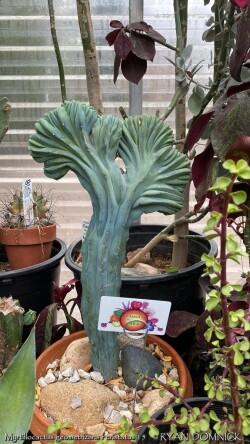
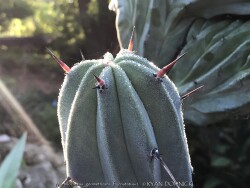
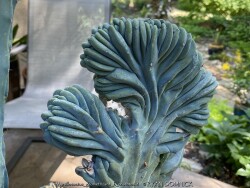

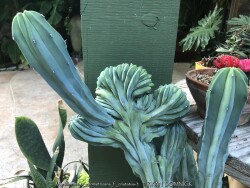

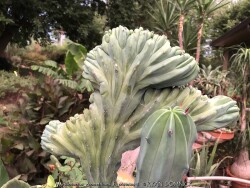
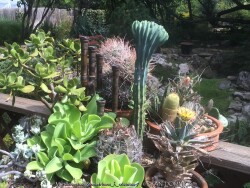

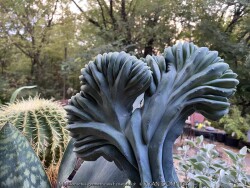
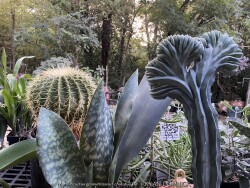

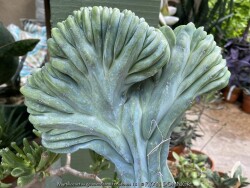

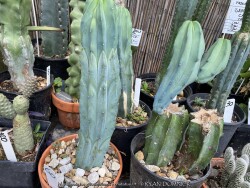
Plant Min Zone: 10b
Plant Max Zone: 11b
Sunlight: All Day Full Sun, Full Sun, Part Sun
Water / Rainfall: Very Low
Soil Quality: Poor
Bloom Season: None
Flower Color: None
Berry / Fruit Color: None
Spring Foliage Color: Bluish Green
Summer Foliage Color: Bluish Green
Fall Foliage Color: Bluish Green
Evergreen Foliage: Yes
Winter Interest: Yes
Scented Flowers: No
Drought Tolerance: High
Wet-Feet Tolerance: Low
Humidity Tolerance: Low
Wind Tolerance: Medium
Poor Soil Tolerance: Rocky Soils, Sandy Soils, Shallow Soils
Height: 1' - 3'
Width: 1' - 2'
Growth Rate: Slow
Service Life: N.A.
Maintenance Need: N.A.
Spreading Potential: N.A.
Yearly Trimming Tips: N.A.
Plant Grouping Size: N.A.
Best Side of House: N.A.
Extreme Planting Locations: N.A.
Ornamental Features: N.A.
Special Landscape Uses: N.A.
Possible Pest Problems: N.A.
Plant Limitations: N.A.
Shippable in 2026: YES
Dinosaur Back Cactus (Myrtillocactus geometrizans f. cristatus) are known for its brilliant powder blue skin on stems that crest and create waves as it grows. If you touch it however, the powdery silver color permanently rubs off leaving a green skin underneath. Native to tropical deciduous forests in Mexico, it's usually grown as a patio or house plant in Kansas. In the wild, established plants are hardy to 25 degrees F for short periods of time. Grow in full sun with occasional extra watering including that which comes from rainfall. Repotting may or may not be needed depending on how large you want the plant to grow; plants can continue to grow taller and tolerate extremely root-bound pots but may need wind bracing. If repotting, make sure to use a sharp draining medium organic cactus mix with plenty of sand and perlite. To play is safe, potted plants are best moved in before night temperatures get below 45 degrees F. It is important to avoid the combination of wet and cold. Before extreme cold occurs, move to a bright interior window over the winter with no watering and keep above freezing. As a winter house plant, it will look presentable all winter long with just no waterings. As a permanent house plant, provide bright light and allow the soil to dry between waterings for many years of carefree enjoyment. Plants grown permanently indoors may begin to elongate stretching for light and lose their spine color. It can be hard to reproduce the intense UV sunlight they need so moving outside for the summer is best. Generally if moving outside for the summer, allow 1-2 weeks of part shade or morning sun before placing in full sun. Plants with time to acclimate will thrive in full sun but be careful not to rush it or sunburning will occur. Potted plants are very low maintenance. I have never seen any insect problems on this plant. Dino is rare and will command a higher price than most other houseplants.